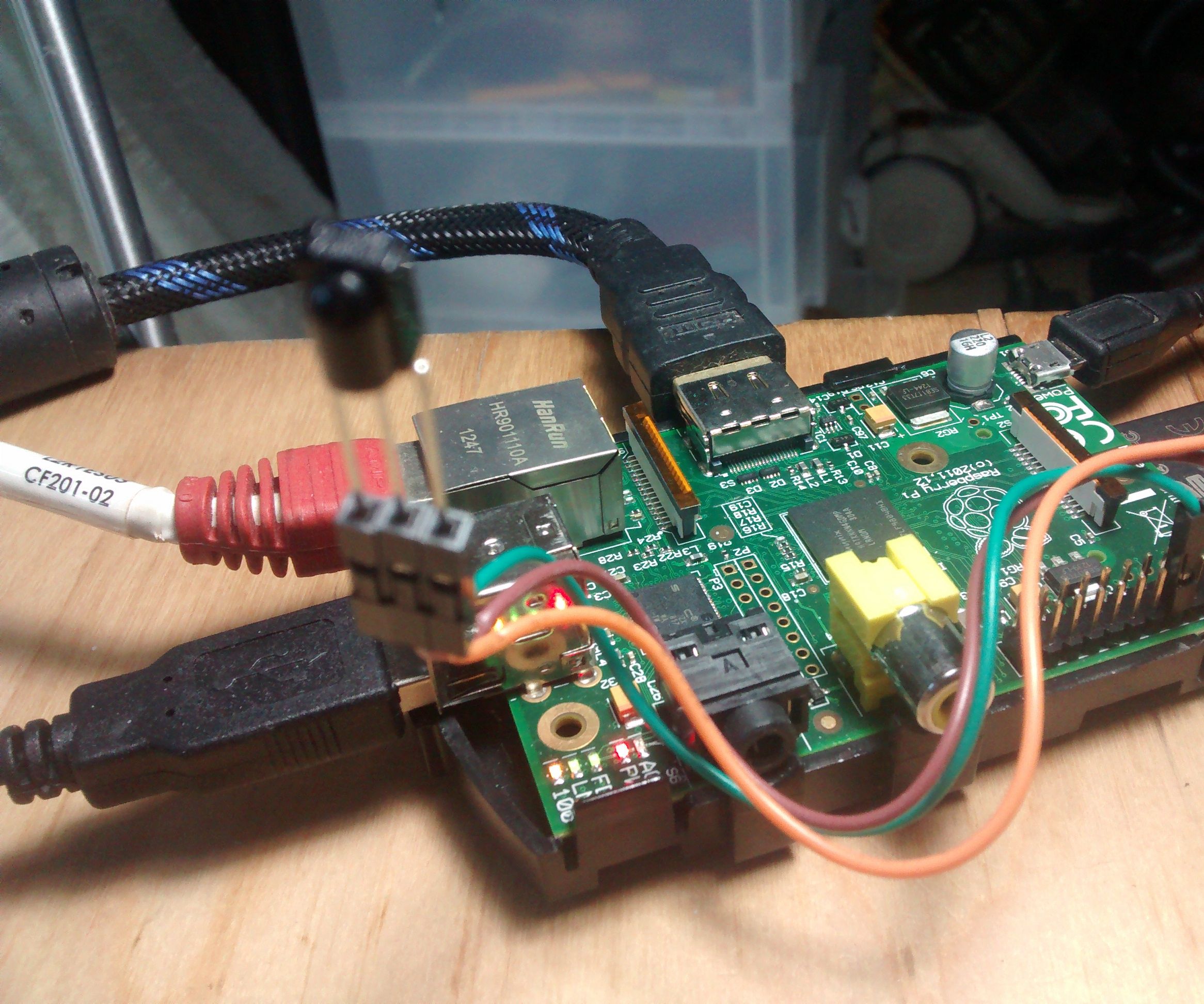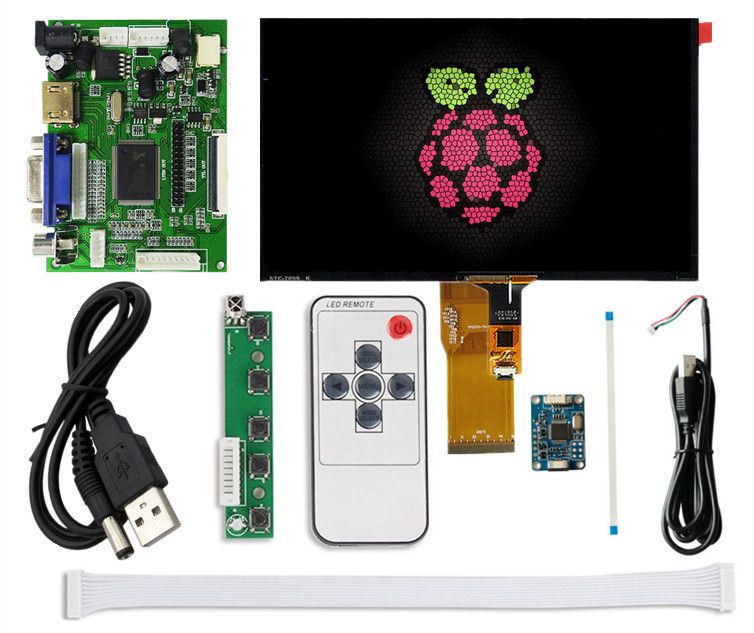Raspberry Pi System Monitor Remote Software: The Ultimate Guide For Tech Enthusiasts
So listen up, tech wizards, if you've ever wondered how to keep tabs on your Raspberry Pi from afar, you're in the right place. Raspberry Pi system monitor remote software has become a hot topic for hobbyists and professionals alike. Imagine being able to monitor your Pi's performance, check temperatures, and manage resources without even being in the same room. Sounds like a dream, right? Well, it’s totally doable, and we're about to break it all down for you.
In today's world of remote work and smart homes, having the ability to remotely monitor your Raspberry Pi opens up endless possibilities. Whether you're running a server, automating your home, or just tinkering with your favorite projects, this guide is your golden ticket. We'll dive deep into the best tools, methods, and tips to set up a reliable system monitor that works like a charm.
This isn't just another tech article; it's your ultimate cheat sheet to mastering Raspberry Pi system monitoring remotely. So grab your favorite beverage, sit back, and let’s get nerdy. By the end of this, you'll be equipped with the knowledge to turn your Pi into a powerhouse that runs smoothly from anywhere in the world. No sweat, guaranteed.
Read also:Katmoviehdphd Your Ultimate Destination For Movie Buffs
Table of Contents
Introduction to Raspberry Pi System Monitor Remote Software
Raspberry Pi Basics: What You Need to Know
Top Raspberry Pi System Monitor Remote Software Options
Step-by-Step Installation Guide
Monitoring Performance: Key Metrics to Watch
Temperature Management: Keeping Your Pi Cool
Read also:Replacement Hyungry The Rising Star In Music And Beyond
Troubleshooting Tips for Remote Monitoring
Best Practices for Raspberry Pi Remote Monitoring
Security Considerations for Your System
Future Trends in Raspberry Pi Monitoring
Conclusion: Take Your Pi to the Next Level
Introduction to Raspberry Pi System Monitor Remote Software
Alright, let's kick things off with the basics. A Raspberry Pi is more than just a tiny computer; it’s a versatile tool that can handle everything from home automation to cloud servers. But what happens when you can’t physically access your Pi? That’s where system monitor remote software comes in. It’s like giving your Pi a remote control, allowing you to keep an eye on its health and performance no matter where you are.
Remote monitoring isn’t just about convenience; it’s about efficiency. With the right tools, you can track CPU usage, memory allocation, disk space, and even network activity. This level of insight helps you optimize your Pi’s performance and prevent potential issues before they spiral out of control. And hey, who doesn’t love a well-optimized system?
Now, before we dive into the nitty-gritty, it’s worth mentioning that not all remote monitoring software is created equal. Some are lightweight and perfect for beginners, while others offer advanced features for power users. Throughout this guide, we’ll explore the best options, so you can choose the one that fits your needs. Sound good? Let’s roll.
Raspberry Pi Basics: What You Need to Know
Before we jump into the world of remote monitoring, let’s take a quick refresher on what makes the Raspberry Pi so special. First off, it’s a single-board computer designed to be affordable, compact, and incredibly versatile. It’s powered by an ARM processor, has GPIO pins for hardware projects, and supports a variety of operating systems.
Here’s a quick rundown of what you’ll need to get started:
- A Raspberry Pi board (any model will do, but newer ones have better specs)
- A microSD card with a compatible OS installed (Raspberry Pi OS is a popular choice)
- A stable power supply (don’t skimp on this one)
- An internet connection (obviously, for remote monitoring)
Once you have these basics covered, you’re ready to level up your Pi game. Remote monitoring software builds on this foundation, giving you the tools to manage your Pi like a pro. And trust us, once you try it, you’ll wonder how you ever lived without it.
Top Raspberry Pi System Monitor Remote Software Options
Option 1: Grafana + Prometheus
If you’re looking for a powerhouse combo, Grafana and Prometheus are the way to go. These tools are designed for serious monitoring and data visualization. Grafana provides stunning dashboards, while Prometheus handles the heavy lifting of collecting metrics. Together, they create a robust system that can track everything from CPU usage to network traffic.
Option 2: Pi-Hole with Admin Console
For those of you using your Raspberry Pi as a Pi-Hole (ad-blocker extraordinaire), the built-in admin console is a gem. It offers real-time stats on DNS queries, blocked ads, and system performance. Plus, it’s super easy to set up and doesn’t require much overhead, making it perfect for lightweight monitoring.
Option 3: WebIOPi
WebIOPi is a lightweight web interface that lets you control and monitor your Pi’s GPIO pins remotely. While it’s not as feature-rich as some of the other options, it’s great for beginners who want to dip their toes into remote monitoring without getting overwhelmed.
Each of these options has its own strengths, so your choice will depend on your specific needs. Need advanced metrics? Go with Grafana. Just want to block ads? Stick with Pi-Hole. Looking for something simple? Try WebIOPi. Whatever you pick, you’ll be set up for success.
Step-by-Step Installation Guide
Now that you know what tools are available, let’s walk through the installation process. We’ll use Grafana and Prometheus as our example, but the steps can be adapted for other software.
- Update your Raspberry Pi OS by running
sudo apt update && sudo apt upgrade. - Install Prometheus by downloading the latest version from the official website and extracting it to your Pi.
- Configure Prometheus by editing the
prometheus.ymlfile to scrape metrics from your Pi. - Install Grafana using the official repository and start the service with
sudo systemctl start grafana-server. - Connect Grafana to Prometheus by adding it as a data source in the Grafana web interface.
- Create custom dashboards to display the metrics you care about most.
That’s it! With these steps, you’ll have a fully functional remote monitoring setup in no time. And if you run into any issues, don’t worry—there’s a huge community of Raspberry Pi enthusiasts ready to help.
Monitoring Performance: Key Metrics to Watch
When it comes to Raspberry Pi system monitor remote software, knowing which metrics to track is crucial. Here are the top ones you should keep an eye on:
- CPU Usage: Are your cores maxed out? This could indicate a performance bottleneck.
- Memory Usage: Running out of RAM can cause your Pi to slow down or crash.
- Disk Space: Make sure you have enough room for your projects and data.
- Network Activity: High bandwidth usage might signal a problem or unauthorized access.
- Temperature: Overheating can damage your Pi, so monitor temps closely.
By tracking these metrics, you can ensure your Pi is running smoothly and catch any issues early. Plus, it’s always satisfying to see your system performing at its best.
Temperature Management: Keeping Your Pi Cool
Let’s talk about heat, baby. Raspberry Pis can get pretty toasty, especially if they’re working hard. Overheating can lead to throttling, which slows down your Pi, or even permanent damage. That’s why temperature management is a big deal when it comes to Raspberry Pi system monitor remote software.
Here are a few tips to keep your Pi cool:
- Use a heatsink or fan to dissipate heat.
- Place your Pi in a well-ventilated area.
- Monitor temperatures using tools like
vcgencmd measure_temp. - Consider underclocking your Pi if it’s consistently overheating.
With the right setup, you can keep your Pi running cool and stable, even during heavy workloads. And hey, a happy Pi is a productive Pi.
Troubleshooting Tips for Remote Monitoring
Even the best-laid plans can go awry, so it’s important to be prepared for troubleshooting. Here are a few common issues and how to fix them:
- Connection Problems: Make sure your Pi is connected to the internet and that any firewalls are configured correctly.
- Data Not Updating: Check your software settings and ensure metrics are being scraped regularly.
- Performance Bottlenecks: Optimize your scripts and close unnecessary processes to free up resources.
And if all else fails, consult the official documentation or reach out to the community. There’s always someone out there who’s faced the same issue and can offer advice.
Best Practices for Raspberry Pi Remote Monitoring
Finally, let’s wrap up with some best practices to keep your Raspberry Pi system monitor remote software running like a well-oiled machine:
- Regularly update your software to get the latest features and security patches.
- Set up alerts for critical metrics so you’re notified of issues before they become problems.
- Document your setup and configurations for easy reference.
By following these tips, you’ll be well on your way to becoming a Raspberry Pi monitoring guru. And who knows? Maybe one day you’ll be teaching others how to do it.
Security Considerations for Your System
Security is a top priority when it comes to remote monitoring. After all, you don’t want some random hacker gaining access to your Pi. Here are a few security tips to keep in mind:
- Use strong, unique passwords for all accounts.
- Enable SSH key authentication instead of password-based login.
- Regularly back up your data in case of a breach.
By taking these precautions, you can rest easy knowing your Pi is as secure as possible. And remember, an ounce of prevention is worth a pound of cure.
Future Trends in Raspberry Pi Monitoring
As technology continues to evolve, so does the world of Raspberry Pi monitoring. We’re seeing more AI-driven tools that can predict issues before they happen and automate solutions. Cloud-based monitoring is also becoming more popular, allowing users to access their Pi’s data from anywhere in the world.
Stay tuned for these exciting developments, and keep pushing the boundaries of what your Raspberry Pi can do. The future is bright, and you’re part of it.
Conclusion: Take Your Pi to the Next Level
There you have it, folks—a comprehensive guide to Raspberry Pi system monitor remote software. From understanding the basics to setting up advanced monitoring tools, you now have the knowledge to take your Pi projects to the next level. Remember, the key to success is staying informed, experimenting, and never being afraid to ask for help.
So what are you waiting for? Get out there and start monitoring your Pi like a pro. And don’t forget to share your experiences, tips, and tricks with the community. Together, we can make the Raspberry Pi ecosystem even stronger. Happy hacking, and see you in the forums!


